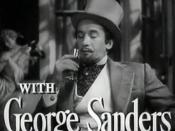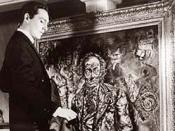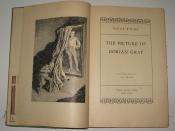'The Picture of Dorian Gray' or
a Special Type of paragone
It has often been said about Oscar Wilde that he is an author who applies his theoretical principles to his artistic work. The Picture of Dorian Gray is probably the best example which illustrates this tendency. As a result of his inclinations towards Aestheticism, Wilde mixes the critical spirit with the creative (artistic) spirit in some of his best writings. The Critic as Artist, one of his most important theoretical programmes, is written in the form of a dialogue, probably as a tribute to Plato, the Greek thinker who often relied on dialogue in order to express his philosophical ideas. On the other hand, a lot of reflections from 'The critic as artist' are transferred to The Picture of Dorian Gray, sometimes word for word as an explicit intention of the author to quote himself, a fact which only stresses further his consistency as a theorist.
To make art criticism indistinguishable from the work of art itself, to merge the personality of the critic with that of the artist is one of the fundamental purposes of the Aesthetic movement. It comes as no surprise, therefore, that an Aestheticist such as Pater seeks to impose himself as a novelist too, with Marcus the Epicurean. What connects both the artist and the critic is beauty; not the abstract idea of beauty, but its impression, which is variable and can be conveyed through any artistic medium�, taking into account that criticism is also a form of art� because it involves creation; in fact, criticism is considered by the Aesthetes to be 'a creation within a creation'.� However, despite the fact that artistic experiences share the same value according to the Aesthetes, every type of art has its own special...


